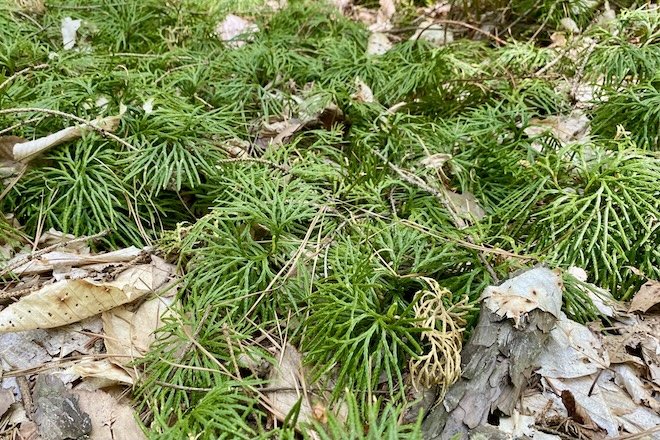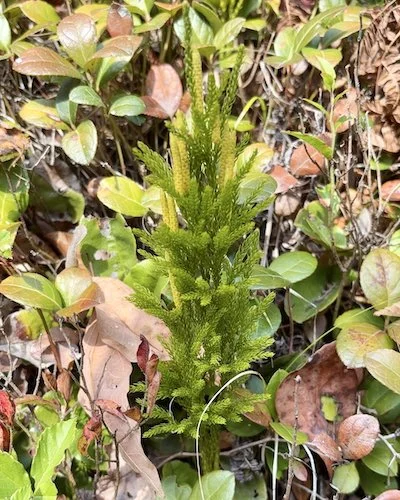This week: Tiny Trees on the Forest Floor
Hello!
Spend any time in an eastern forest, and you’re likely to stumble upon some tiny little trees. Many times, these groves of 2- to 6-inch-tall plants aren’t trees at all; they’re clubmosses, a type of lycophyte. What’s a lycophtye, you ask? The quick answer is that they are vascular plants (like trees and flowers, but not like mosses) that reproduce via spores and rhizomes (like ferns, but they are not ferns). Other lycophytes are quillworts and spikemosses—topics for another day.

Clubmosses are ancient. Their prehistoric ancestors lived 300-400 million years ago and grew to 100 feet tall. This geologic period is called the Carboniferous, and these big clubmosses contributed to the formation of large coal deposits throughout Appalachia.

In addition to mining lucrative coal deposits, humans have relied on clubmosses for many other purposes. In recent history, these plants were harvested for Christmas decorations. However, their slow reproduction and growth rate make this practice irresponsible (and illegal, in many cases). A little further back, the highly flammable clubmoss spores were used as flash powder for cameras, fireworks, and even for magic tricks. Clubmosses were used to set dyes into fabrics and in indigenous medicinal and ceremonial practices. Little plants with big utility!

Clubmosses do not transplant well and are not prevalent in the nursery trade. If you have some on your land or have permission from a landowner, you can try your hand at growing them from spores. Or, leave them be and enjoy them!

Elsewhere:
Speaking of Christmas, add this book to your list. Shrouded in Light: Naturalistic Planting Inspired by Wild Shrublands, by Kevin Philip Williams and Michael Guidi, is a gorgeous, inspiring reminder not to overlook shrubs in naturalistic garden design and ecological restoration.
Have a great week,
Julie